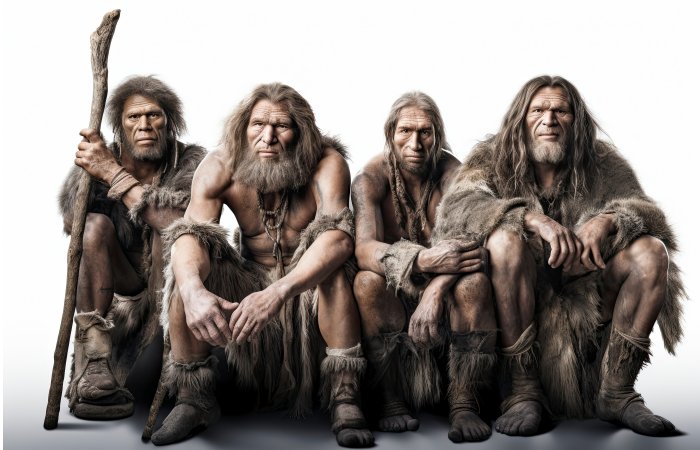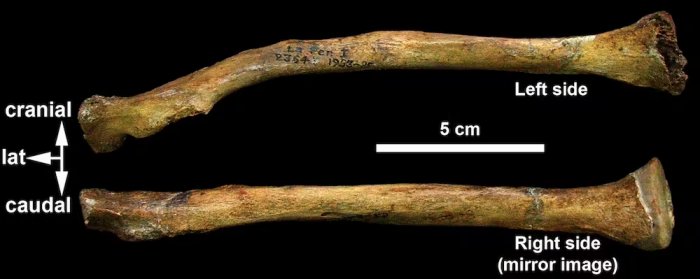Neanderthals Cared For Each Other And Survived Into Old Age – Study Shows
AncientPages.com - When we think of Neanderthals, we often imagine these distant ancestors of ours to be rather brutish, dying at a young age and ultimately becoming extinct. But findings show that at least some of these ancient Neanderthals survived into old age – despite suffering from sickness or diseases.
Credit: Adobe Stock - Karlaage
Neanderthals were hunter-gatherers, living in harsh environments, mostly colder than today. And of course they had to face different dangers to modern humans – not only during the hunt, but also because they shared ecosystems with large carnivores such as lions, leopards and hyenas.
But despite this harsh life of the hunter gatherer, our research indicates that some Neanderthals lived to be fairly old and even had some of the signs of age related illnesses – such as degenerative lesions in the spine, consistent with osteoarthritis. Our research also found that an adult male Neanderthal survived bone fractures. And when he died, he was buried by members of his group.
Introducing the Neanderthals
The first fossil remain of a Neanderthal was found in 1829 in Belgium. But it was not until 1856 that the species was named after the discovery of a partial skeleton in Germany. The site (called Feldhofer) was located in the Neander valley. In old German “valley” is written “thal” and hence the scientific name Homo neanderthalensis, which means “the humans from the Neander valley”, was born.
Photo of the discovery of La Ferrassie 1 in 1909. Collections M.N.P. Les Eyzies, Author provided
At the beginning of the 20th century, the fossils of several Neanderthals were found in France – comprising the most complete skeletons found to that date. The region, which is on the verges of the rivers Dordogne and Vezère, is an archaeological hotspot with a number of famous sites, such as the Cro-Magnon rockshelter, Lascaux, and La Chapelle-aux-Saints.
These sites have been vital in helping archaeologists understand human evolution in Europe during the Upper Pleistocene. This is 126,000 years ago, to the end of the last glacial period which was approximately 12,000 years ago. One of these sites, called La Ferrassie, which is in Dordogne, France, has yielded the complete skeletons of two adult and the incomplete skeletons of five juvenile Neanderthals – as well as a few isolated dental remains.
Most of these skeletons were found at the beginning of the 20th century, but during previous excavations at the sites (between the 1960s to 1970s) archeologists discovered a child skeleton, which was called La Ferrassie 8. And we were able to further complete this skeleton when we reassessed the bone remains more recently.
New data from an ancient grave
La Ferrassie 1 (LF1) was the first skeleton to be found in the La Ferrassie rock shelter in 1909 and is still one of the most complete Neanderthal skeletons ever to be found. LF1 is a male Neanderthal skeleton, found in Dordogne and estimated to be 70,000-50,000 years old. He died when he was between 40 and 55 years old – a relatively old age in this species. He was a fairly tall Neanderthal (172cm or five feet eight inches) and weighed around 85kg.
As part of our research, we used new non-invasive technologies to complete our direct observations of the skeleton of LF1. We observed several anomalies in the spine and in the shape of the clavicle. A CT-scan revealed this was probably due to a fracture of the left clavicle, which happened before this individual became an adult.
This was not the only fracture that this individual suffered. Previous studies have also shown that this Neanderthal also broke part of his femur. We also found degenerative lesions on his spine, consistent with osteoarthritis. And previous research has also shown that he suffered from a lung disease – which could have been the cause of death.
Growing old gracefully
What this all shows is that many Neanderthals may have lived to be older than previously estimated – much like humans of today. And it’s also believed that much like us, some Neanderthal groups actually buried their dead.
French sites such as La Chapelle-aux-Saints and La Ferrassie have provided evidence to support this. In La Ferrassie, at least five of the skeletons show an East-West orientation and the two adults show the same orientation but face opposite directions.
Denis Peyrony, the director of the excavation when La Ferrassie 1 was found, indicated that this individual was lying in a “funeral pit”, a purposefully dug hole where the corpse was laid. And our observations looking at the bone surface and the way the bones are broken are consistent with the corpse being buried shortly after death. The corpse also didn’t suffer any damage from carnivores – which would have been the case if the corpse had been left behind by the group.
Comparison between the left clavicle (up), which is pathological with the mirror image of the right clavicle (bottom). Asier Gómez-Olivencia, Author provided
Much like humans of today, then, it seems the Neanderthals, if injured, received help from other members of the group, which helped them to survive – with some of them reaching advanced ages. So maybe it’s time we changed our stereotype of the brutish, thuggish Neanderthals, and instead start viewing them with the respect and awe they really deserve.
Written by James Ohman, Senior Lecturer in Palaeoanthropology, Liverpool John Moores University and Asier Gomez-Olivencia, Research Fellow in Stratigraphy and Paleontology, Universidad del País Vasco / Euskal Herriko Unibertsitatea
Provided by The Conversation
This article is republished from The Conversation under a Creative Commons license. Read the original article.
More From Ancient Pages
-
 Charles VI Of France – The King Who Was Made Of Glass
Featured Stories | Jan 22, 2016
Charles VI Of France – The King Who Was Made Of Glass
Featured Stories | Jan 22, 2016 -
 Will-o’-the-wisp: Eerie Lights Over Swamps And Marshes That Frightened And Led People Astray
Featured Stories | Apr 23, 2020
Will-o’-the-wisp: Eerie Lights Over Swamps And Marshes That Frightened And Led People Astray
Featured Stories | Apr 23, 2020 -
 Mysterious Utah: Prehistoric Ancient Petroglyphs Of Santa Clara River Reserve
Civilizations | Oct 2, 2018
Mysterious Utah: Prehistoric Ancient Petroglyphs Of Santa Clara River Reserve
Civilizations | Oct 2, 2018 -
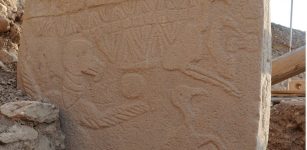 Evidence Of Neolithic Bird Hunting In Upper Mesopotamia
Archaeology | Sep 27, 2023
Evidence Of Neolithic Bird Hunting In Upper Mesopotamia
Archaeology | Sep 27, 2023 -
 King Menelaus Of Sparta: Husband Of Helen Of Troy And Key Figure In The Trojan War
Featured Stories | May 27, 2020
King Menelaus Of Sparta: Husband Of Helen Of Troy And Key Figure In The Trojan War
Featured Stories | May 27, 2020 -
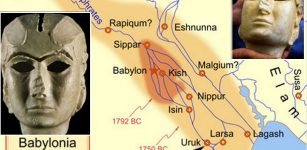 Sumerian ‘Mask Of Warka’ From Uruk: Sculptured Face May Depict Goddess Inanna
Featured Stories | Sep 15, 2016
Sumerian ‘Mask Of Warka’ From Uruk: Sculptured Face May Depict Goddess Inanna
Featured Stories | Sep 15, 2016 -
 5 Most Common Misunderstandings About Evolution
Evolution | Jun 5, 2023
5 Most Common Misunderstandings About Evolution
Evolution | Jun 5, 2023 -
 Mystery Of King Solomon’s Mines: An Unsolved Ancient Enigma
Featured Stories | Aug 9, 2018
Mystery Of King Solomon’s Mines: An Unsolved Ancient Enigma
Featured Stories | Aug 9, 2018 -
 Cosimo di Giovanni de’ Medici – Exile Of The Generous, Intelligent Banker Caused Fury In Renaissance Florence
Featured Stories | Apr 7, 2021
Cosimo di Giovanni de’ Medici – Exile Of The Generous, Intelligent Banker Caused Fury In Renaissance Florence
Featured Stories | Apr 7, 2021 -
 Scientists Attempt To Solve An Ancient Greek Volcano Mystery
Archaeology | Sep 20, 2022
Scientists Attempt To Solve An Ancient Greek Volcano Mystery
Archaeology | Sep 20, 2022 -
 Evidence Of An Advanced Ancient Civilization In Texas That Mysteriously Disappeared
Ancient Mysteries | Jul 18, 2024
Evidence Of An Advanced Ancient Civilization In Texas That Mysteriously Disappeared
Ancient Mysteries | Jul 18, 2024 -
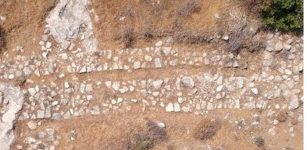 3,000-Year-Old Settlement Studied By Archaeologists In Cyprus
Archaeology | Sep 10, 2022
3,000-Year-Old Settlement Studied By Archaeologists In Cyprus
Archaeology | Sep 10, 2022 -
 Mystery Of The Marble Lions On The Sacred Island Of Delos Solved?
Archaeology | Oct 12, 2021
Mystery Of The Marble Lions On The Sacred Island Of Delos Solved?
Archaeology | Oct 12, 2021 -
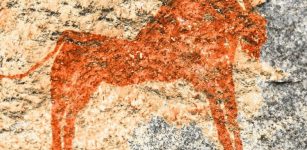 Great research of Polish archaeologist working at rock art site in Kondoa, Tanzania
News | Aug 26, 2015
Great research of Polish archaeologist working at rock art site in Kondoa, Tanzania
News | Aug 26, 2015 -
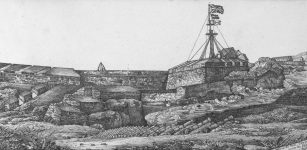 Thousands Of Cannonballs Discovered In Southern India
Archaeology | Dec 23, 2015
Thousands Of Cannonballs Discovered In Southern India
Archaeology | Dec 23, 2015 -
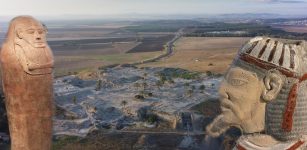 Ancient Mystery Of The Biblical Canaanites – New DNA Insight
Archaeology | May 28, 2020
Ancient Mystery Of The Biblical Canaanites – New DNA Insight
Archaeology | May 28, 2020 -
 “The Starving Of Saqqara Statue” And Its Undeciphered Inscription Could Pre-Date The Pyramids Of Egypt
Archaeology | Jun 2, 2014
“The Starving Of Saqqara Statue” And Its Undeciphered Inscription Could Pre-Date The Pyramids Of Egypt
Archaeology | Jun 2, 2014 -
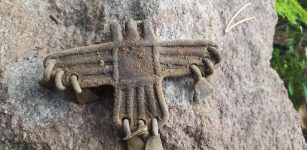 Unique Ancient Three-Headed Eagle Pendant Discovered In Finland: A Symbol Of Three Different Human Souls
Ancient Symbols | May 6, 2016
Unique Ancient Three-Headed Eagle Pendant Discovered In Finland: A Symbol Of Three Different Human Souls
Ancient Symbols | May 6, 2016 -
 Gunung Padang – Remarkable Megalithic Site In Indonesia
Civilizations | Jun 14, 2014
Gunung Padang – Remarkable Megalithic Site In Indonesia
Civilizations | Jun 14, 2014 -
 Extraordinary Biblical Frescos Uncovered In Domitilla Catacombs
Archaeology | Jun 3, 2017
Extraordinary Biblical Frescos Uncovered In Domitilla Catacombs
Archaeology | Jun 3, 2017

